How to train and tie in wisteria shoots – expert advice for this sweet-smelling vine
Discover how to train and tie in wisteria shoots for a strong, healthy vine that dazzles with glorious blooms
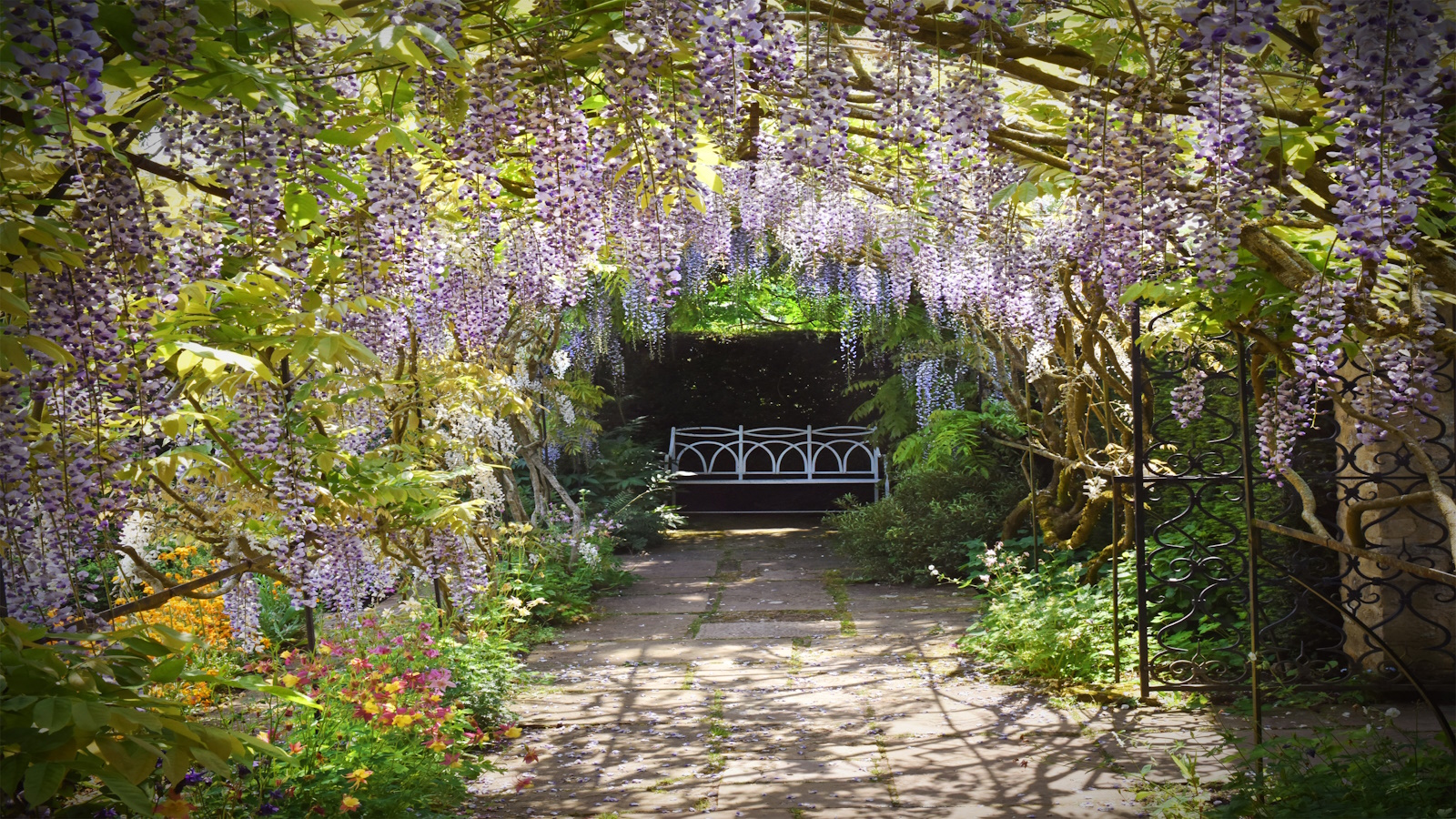

Knowing how to train and tie in wisteria shoots can make a huge difference to the health of the plant and future flowers. A firm cottage garden favorite, this long-lived vine delights with its springtime cascades of purple-blue and white blooms and can easily reach the heady heights of 30 feet or more if left unchecked.
With Instagram fans seeking out the latest sensational displays – see #wisteriahysteria – it’s definitely the chic choice for covering the façade of your home and if you want an elegant display, tying in wisteria shoots is a garden task well worth getting to grips with.
These flamboyant and fragrant plants can also be dramatically trained over pergola, arch or gazebo with just a little green-fingered know-how. We've called on expert gardeners to share their insider tips.
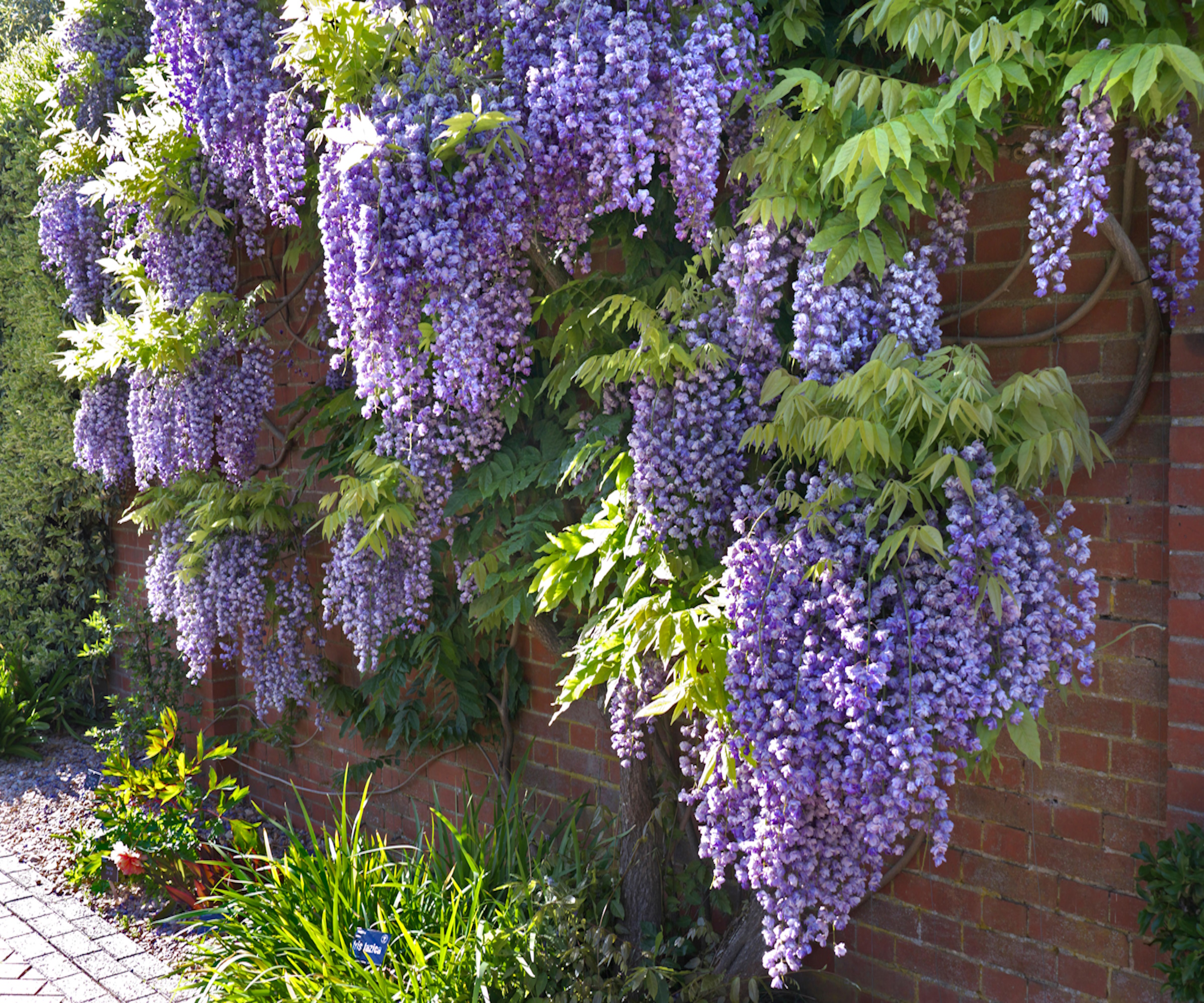
How to train wisteria for expert results
Wisteria has a long tradition in Asian, American and English gardens and is instantly recognisable for its draping blooms and gnarly vines. With nine species and endless cultivars, there are many of these gorgeous plants to get to know.
Japanese wisteria and Chinese wisteria are the most common species available. Both fast growing flowering vines - considered invasive in some Southeastern states - they do require firm handling to keep them in check, but always put on a spectacular display. Native species American wisteria and Kentucky wisteria require more patience to get started, but will reward with equally magnificent flowers and are much easier to manage.
How to train a newly-planted wisteria
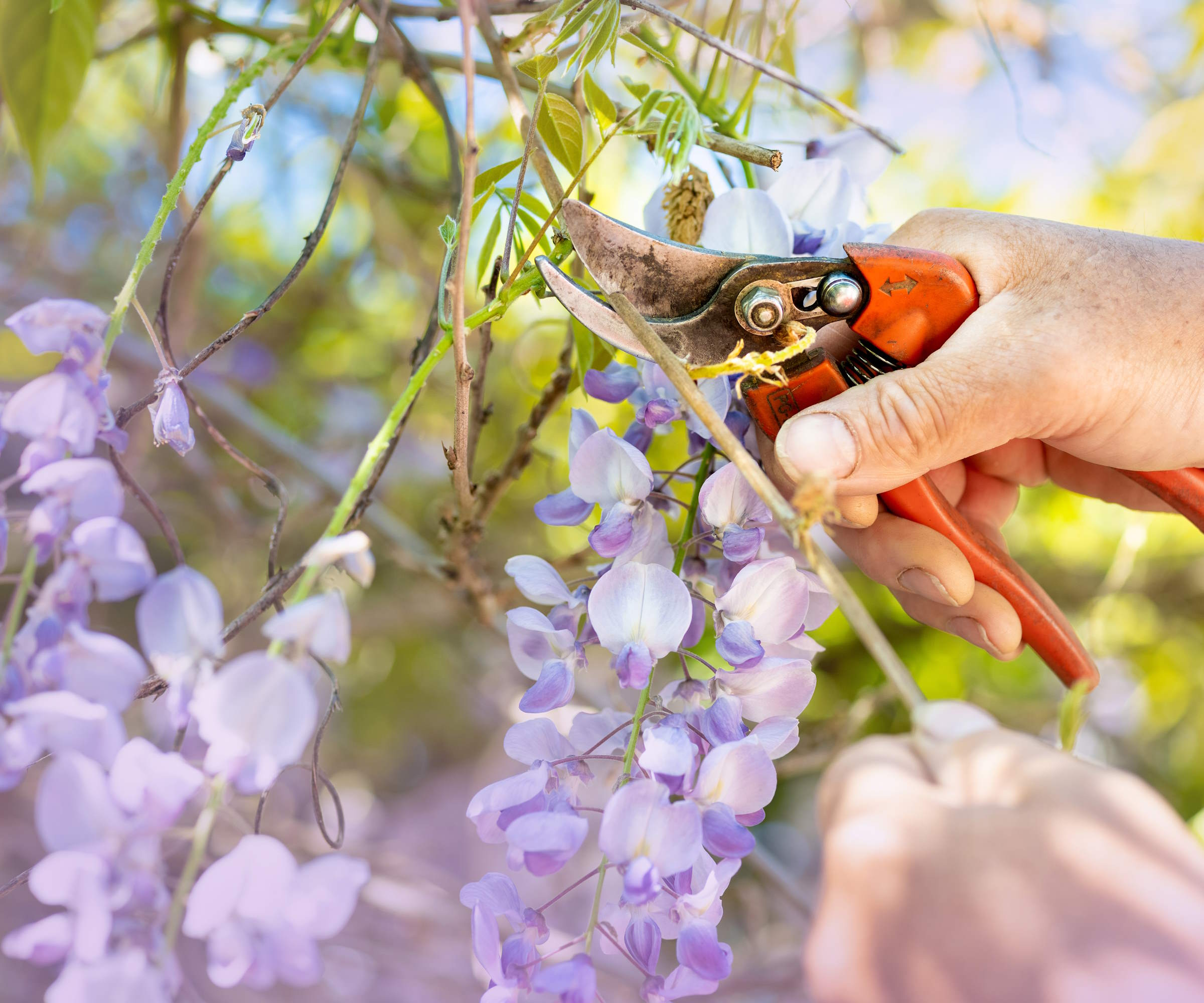
Fast growing, long lived and heavy, especially when in full leaf, wisterias need a strong framework to grow up.
‘Wisteria is a twining vine,’ explains landscape designer and owner of Outside Space NYC, Irene Kalina-Jones. ‘It doesn’t climb by attaching itself to walls like hydrangea or ivy, instead it needs a sturdy support.’
Planning ahead is important when growing wisteria as these plants are long lived and dislike being moved once established. Always have a clear idea of the desired result and be realistic about the area a mature wisteria will cover.
Metal or weather-resistant timber arches, pergolas and gazebos are ideal structures for growing wisteria but do make sure they are well crafted, the joints are secure, and they have concrete footings to avoid shifting in the ground. Discover how to design a pergola for a fabulous garden focal point.
If you want to use a trellis, ensure gaps are wide enough to accommodate the wisteria stems as they grow. Too small, and the edges can rub and break the plant’s bark, possibly leading to disease. There’s also a risk the plant will eventually break the latticework and make it hard to repair.
To get started, encourage two or three young shoots to twine around each other, and along each post for all-over coverage and to establish an attractive and interesting framework. Attach steel eye hooks, such as these from Amazon, at 18in intervals along each side of the structure and thread horizontally with 14 gauge galvanised wire. Tie the young shoots to the taut, but not tight, wires as they grow, and learn when and how to prune wisteria correctly for bountiful blooms.
How to train wisteria up a wall

If you long for a dreamy, wisteria-clad home then you need to know how to train this climber vertically.
‘If you want to go up the wall, I recommend fixing up a network of stainless-steel eyehooks and threading with either fishing wire or stainless-steel tension wire as they can support the weight of the wisteria,’ says Irene Kalina-Jones. Tie existing branches and fresh shoots onto the wires at regular intervals, allowing a little extra room to encourage a natural, organic look.
Avoid crossing stems, as this can lead to bark damage and an uneven result. Also be sure to cut out or re-tie any shoots or branches that run between the wire supports or trellis and the wall’s surface, as this can restrict air flow – heightening the risk of disease and viruses spreading – and encourage vigorous tendrils to dislodge render and brickwork.
‘Pruning the plant correctly will also help the stems thicken up, as well as encourage the plant to take much of its own weight,' adds Irene.

Irene Kalina-Jones is a partner at Outside Space NYC, a landscape design/ build firm and garden center based in Brooklyn. Irene has over 15 years of experience specializing in soft landscaping for private gardens in diverse spaces across New York City. In addition to her design work, Irene runs a garden center that offers unique native perennials and exotic indoor plants, and she is passionate about educating the community on urban gardening.
How to train wisteria as a tree

Training wisteria as a standalone tree is not only a satisfying project, but a brilliant way to bring height and form to your yard.
‘It is possible to train a wisteria into a tree,’ says Susan Brandt, co-founder of Blooming Secrets. First, install a sturdy 4 or 5ft tall metal or wooden post into the ground – ensuring it is secure – before planting the climber next to it. Use screw in eyelets and galvanised wire to create a framework.
‘As the plant grows you trim off the side shoots,’ says Susan. ‘This will create a trunk. When the plant gets to be around 3 feet tall you want to prune the top of the trunk. This will encourage the growth in the trunk as well as the branching which will give it the shape of a tree.’ Follow these steps over the next three to five years and you will be rewarded with a statuesque tree dripping with blooms.
Which plant ties to use and the best tying technique
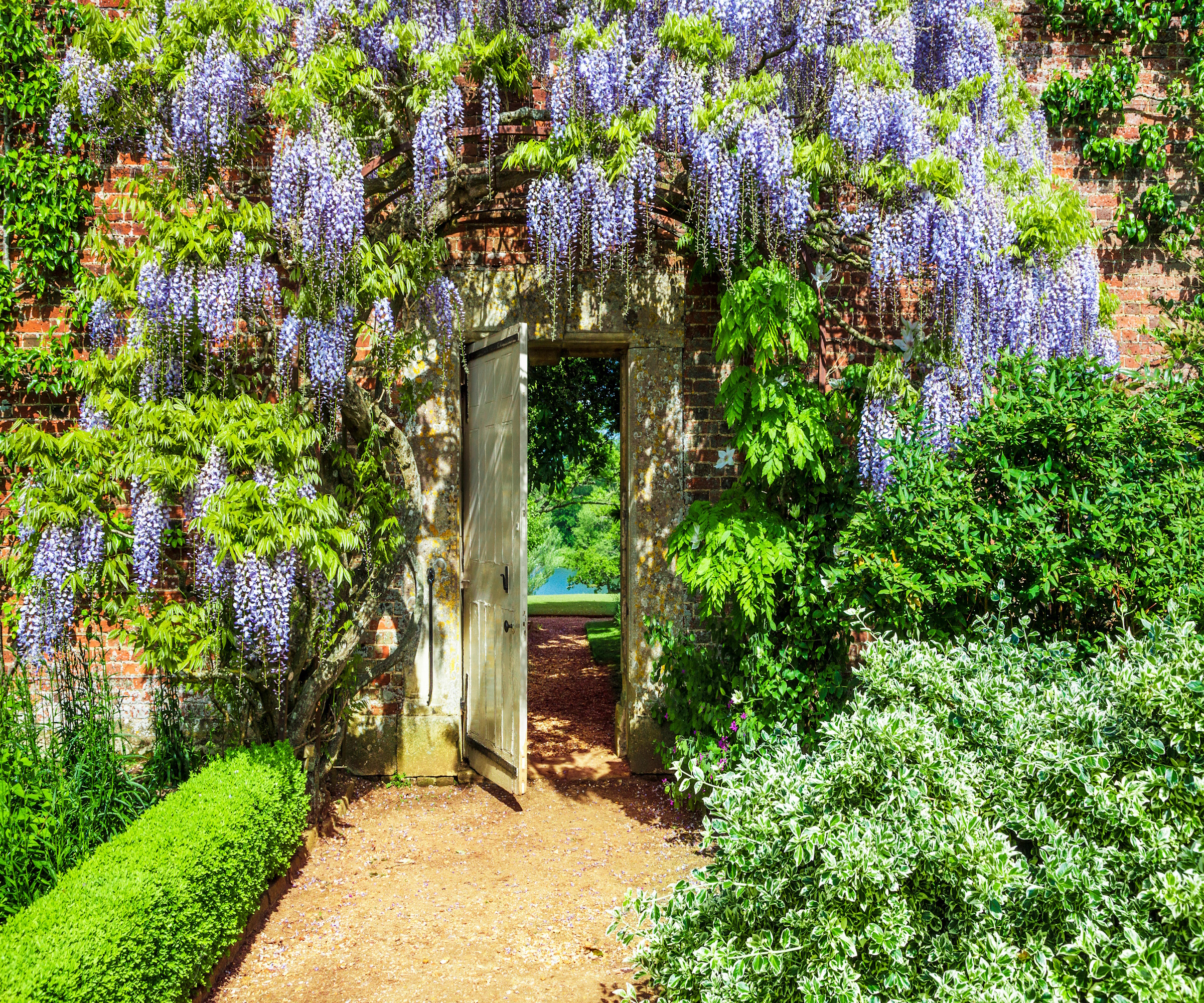
Choosing the right type of plant ties can be confusing but thankfully the experts have some clear views.
‘For thick main shoots such as wisteria or honeysuckle I like to use zip ties,’ says Irene Kalina-Jones. ‘They withstand strong winds, particularly important on rooftops.’ You can find adjustable garden zip ties at Walmart, or alternatively try handy plant clips from Burpee.
Heavy duty garden twine, such as natural jute twine from Amazon, is a firm favorite amongst many professional gardeners. Particularly for small to mid-thickness stems, it is easy to work with, biodegradable and strong. It will need replacing regularly and won’t withstand constant wet.
Wire and metals ties are best avoided, as they can easily cut into soft stems and young growth, damaging the surface resulting in unsightly swellings or entry points for fungal disease.
Using the right technique to tie stems and branches in place is important, to ensure there is enough room for growth as well as support. A simple figure-of-eight knot is ideal for securing heavier stems or offering extra support in windblown gardens. Loop the center of the tie around the stem, cross over before looping around the support and tying. This creates a buffer in between the stem and support, eliminating any chance of damage through rubbing.
Flexible, young stems are best secured with a single loop around stem and support fastened with a double knot, and allow some room for growth.
FAQs
When is the best time to tie in wisteria shoots?
Tying in young wisteria shoots is only necessary with young plants - less than three years old - or where new growth is needed to cover or extend the existing framework. Select a few, juvenile shoots, gently spread them out in different directions and tie them into the support at regular intervals.
Knowing how to tie in and train a wisteria is a task worth mastering, and hopefully you have found these expert tips helpful enough to have a go with confidence. Bring yet more height and floral interest to your yard with these climbing plant support ideas and trellis ideas.
Sign up to the Homes & Gardens newsletter
Design expertise in your inbox – from inspiring decorating ideas and beautiful celebrity homes to practical gardening advice and shopping round-ups.

Journalist Jill Morgan has spent over 20 years writing and editing gardening, interior and property features. Titles she has worked on include The English Home, House Beautiful, Ideal Home, Houzz and Modern Gardens and she writes regularly for H&G as a Contributing Editor. Whilst she is a dab hand at renovation projects and DIY, she is happiest when out digging in the garden or planning a new border.
-
 Cate Blanchett says 'leaf blowers need to be eradicated from the face of the earth' because '30 minutes on a leaf blower has more pollution than driving a pickup from Texas to Alaska'. Does this make you rethink yours?
Cate Blanchett says 'leaf blowers need to be eradicated from the face of the earth' because '30 minutes on a leaf blower has more pollution than driving a pickup from Texas to Alaska'. Does this make you rethink yours?The sound of a leaf blower on a summer's day is undoubtedly annoying, but do they deserve to go? The actress responds with an enthusiastic yes
By Sophie Edwards
-
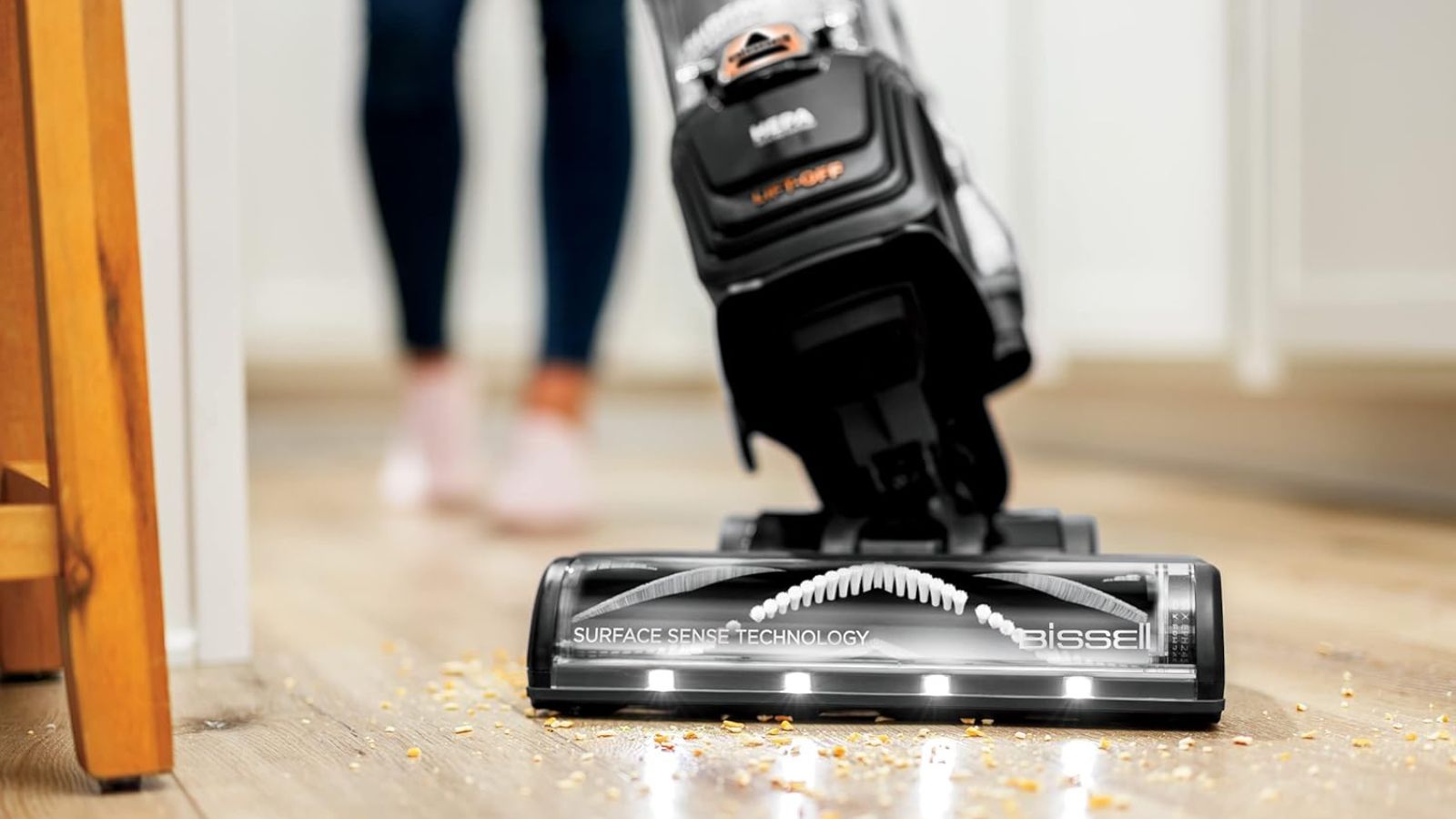 I tested the Bissell SurfaceSense Allergen Pet Lift-Off upright vacuum – and love how impressively it cleans every surface at this price
I tested the Bissell SurfaceSense Allergen Pet Lift-Off upright vacuum – and love how impressively it cleans every surface at this priceAfter two weeks of vacuuming and testing, I'm recommending this budget-friendly vacuum to everyone
By Camryn Rabideau